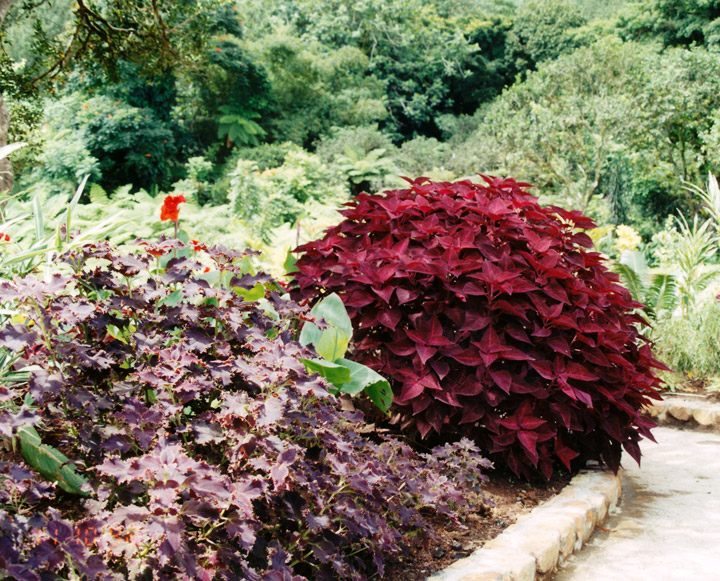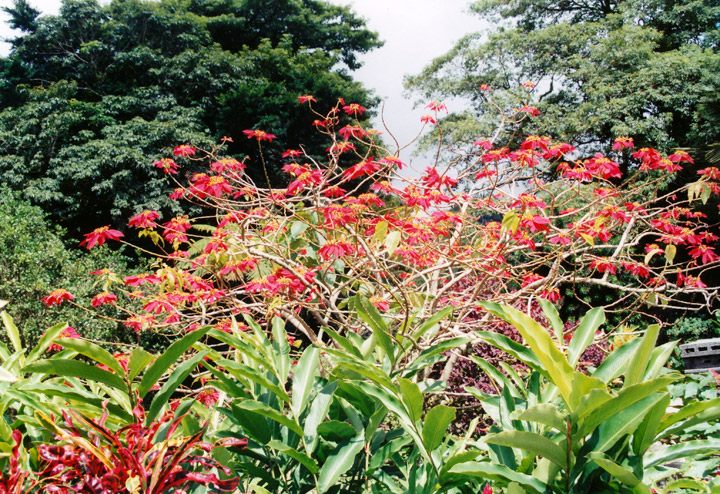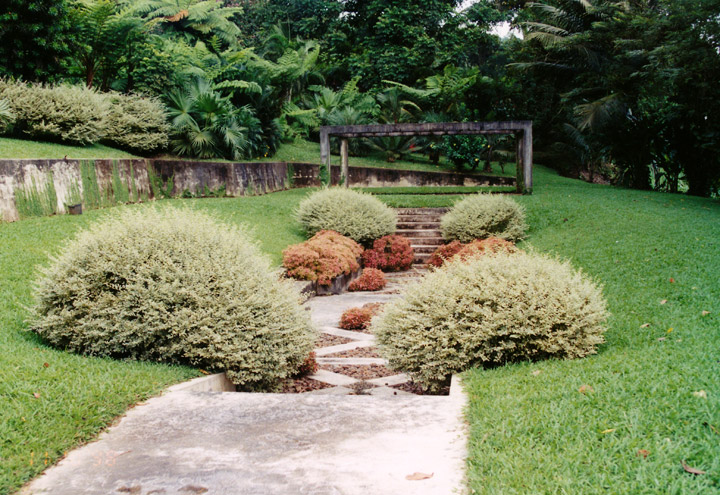

Botanical Garden
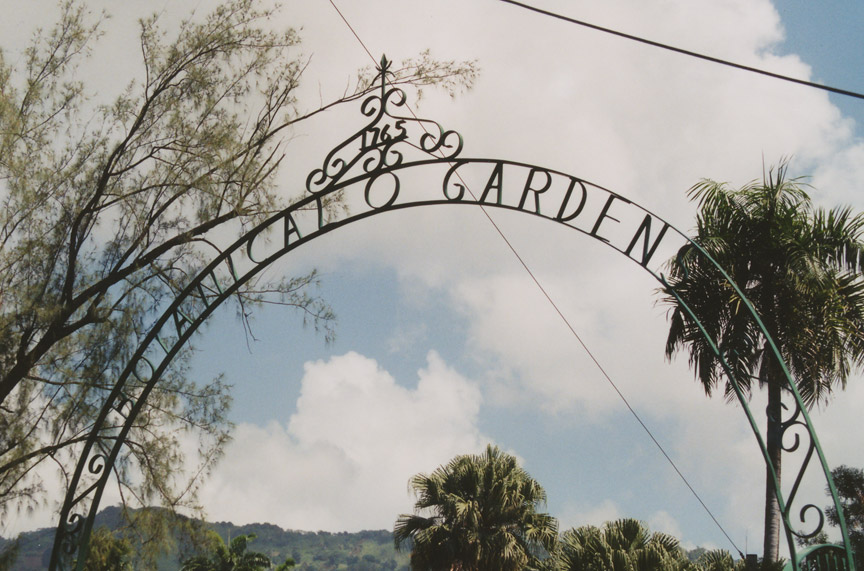
St Vincent Botanical Gardens
The St Vincent Botanical Gardens, are one of the oldest in the Western Hemisphere (preceded only by Bartram's Garden in Philadelphia) and perhaps the oldest in the tropical world. Conservation of rare species of plants has been practiced here since 1765. The Nicholas Wildlife Aviary complex located within the Gardens also maintains a captive breeding program to conserve the vulnerable St Vincent Parrot.
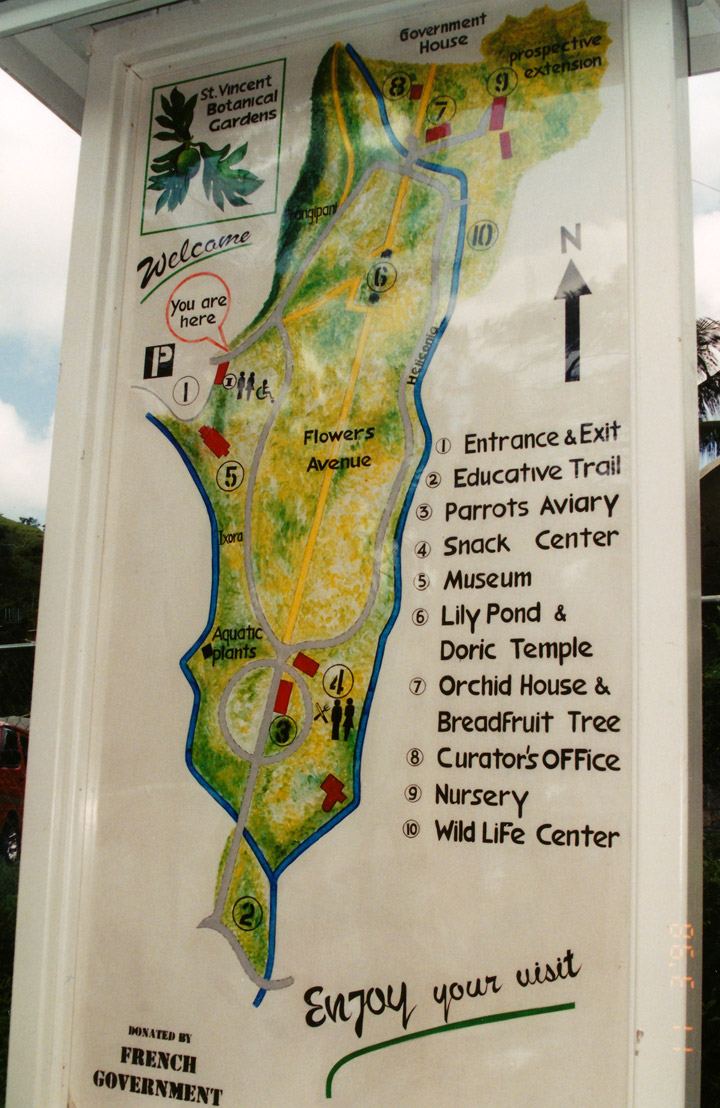
The magnificent Botanic Gardens offer an attractive, alluring and peaceful
retreat and are currently one of the most visited sites in St Vincent & the
Grenadines. It is a venue for weddings, photographing, family celebrations,
studying and other special events, hence fostering a sense of public ownership
and increased appreciation of the Gardens’ historic and cultural significance.
An historic landmark of major national, regional and global significance, the
Botanic Gardens occupies approximately 20 acres about one mile out of capital,
Kingstown along the Leeward Highway.
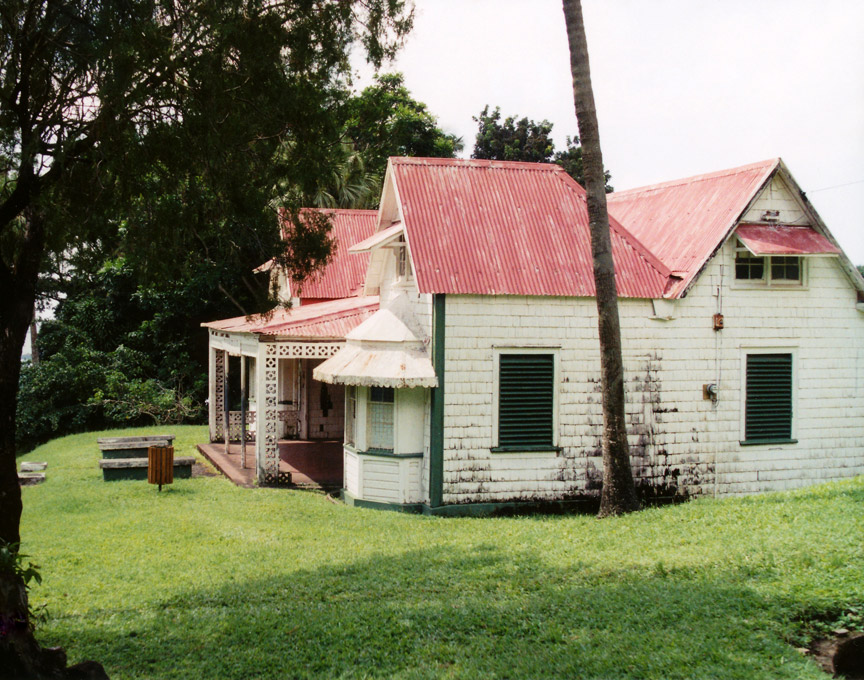
the museum
The Nicholas Wildlife Aviary Complex, located within the Gardens, maintains a captive breeding program to conserve the vulnerable St Vincent Parrot, “Amazona guildingii”, the National Bird. These endemic parrots can be found in the wild and also in the Aviary.

Following the Peace of Paris in (1763) the newly appointed governor of the
southern British Caribbean islands, Robert Melville, and the military surgeon in
St. Vincent, George Young, decided to create a botanic garden, primarily to
provide medicinal plants for the military and improve the life and economy of
the colony. In the early 18th century great emphasis had been laid on
introducing valuable and commercial plants from the East Indies to Kew Gardens
in England to be sent later to the American tropics. The Royal Society fostered
the introduction, establishment, and dissemination of highly prized species.

explaining the plants
Melville, anticipating modern ethnobotany, urged that "physical practitioners of the country, natives of experience, and even old Caribs and slaves who have dealt in cures might be worth taking notice of, and if at any time you should think that a secret may be got at or even an improvement for small expense, I shall readily pay for it." The War Department (UK) and the Honourable East India Company sent seeds and plants from tropical India and from British North Borneo, Sabah, and Sarawak in the East Indies. Other species came from French and Caribbean sources, such as cinnamon from Guadeloupe and Grenada. From Kew Gardens came seeds from China.
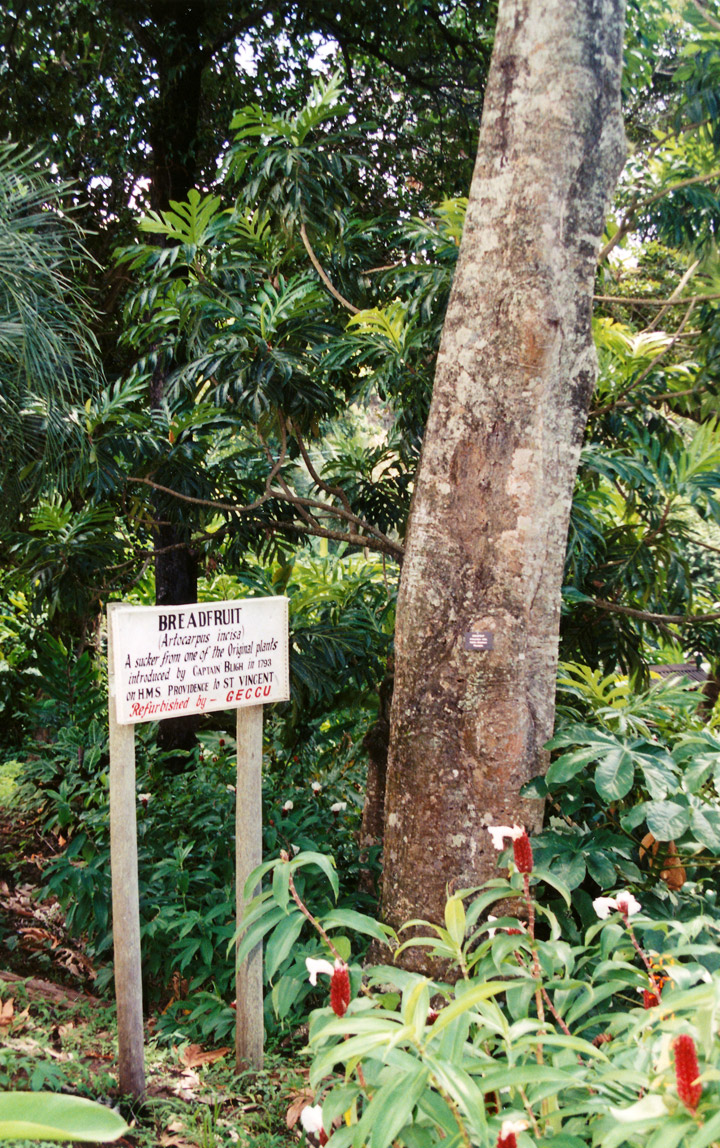
Under the capable and enthusiastic guidance of Young and several successive
curators, both British and French, the Botanical Gardens quickly attained an
enviable reputation and received wide acclaim. It was a great time for the
exchange of valuable plants in the Caribbean, from French Guiana to Jamaica.
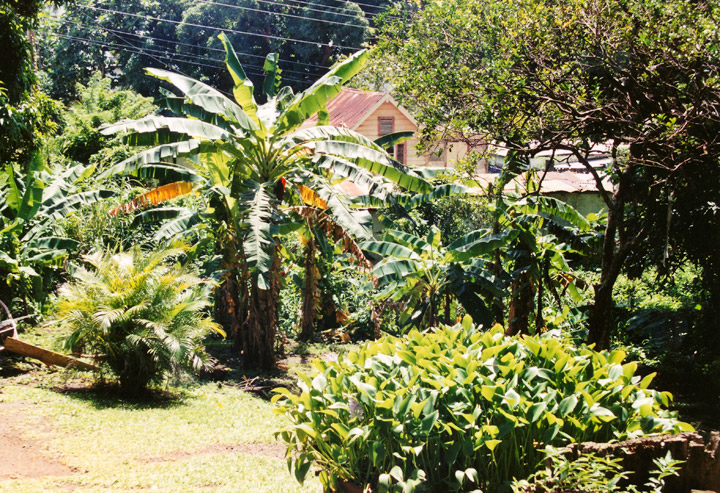
Among the wide variety of tropical trees and shrubs is a third generation
breadfruit tree, a sucker from the original plant brought by Captain William
Bligh (of Bounty fame) in 1793. In 1787-88 Captain Bligh made his ill-fated
voyage on HMAV Bounty to Tahiti to collect breadfruit and other useful plants
for the West Indies. Undaunted by the notorious mutiny of his first crew,
Bligh again set sail for Tahiti aboard HMS Providence. He completed his mission
in Kingstown, St. Vincent on January 23rd 1793 with plants from the South
Seas. The Botanic Garden's Curator took great care of these plants, and the
success of all those efforts is evident from the widespread distribution of
breadfruit, the most useful food plant throughout the West Indies.
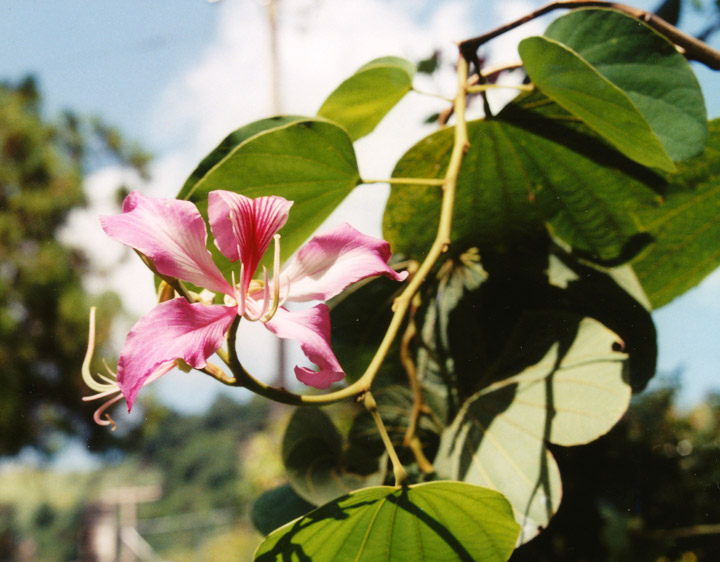
The first half of the 19th Century was a lean time for colonial botanic gardens.
By 1850, due to a lack of interest and maintenance, the St Vincent gardens had
fallen into disrepair. Local efforts in St Vincent initiated in 1884 began to
revive the gardens; by 1890 the work was reactivated as part of a larger
agricultural and botanical scheme.
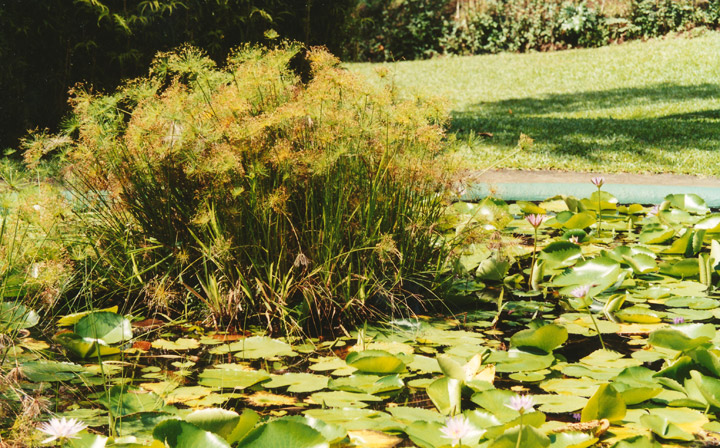
The Botanical Gardens soon regained their former glory and beauty, and the plant
collections were recovered. Considerable attention was given to experimental
work in the gardens on economic crops until 1944 (cotton, arrowroot, cacao and
sugarcane). The layout of the re-established Gardens was improved by the
construction of a small Doric Temple, by road building and by the continuous
introduction of plants to maintain and add to the collection. After 240 years
the Botanical Gardens today remain a beautiful tranquil link with Saint Vincent
and the Grenadines’ history.
Text from Wikipedia
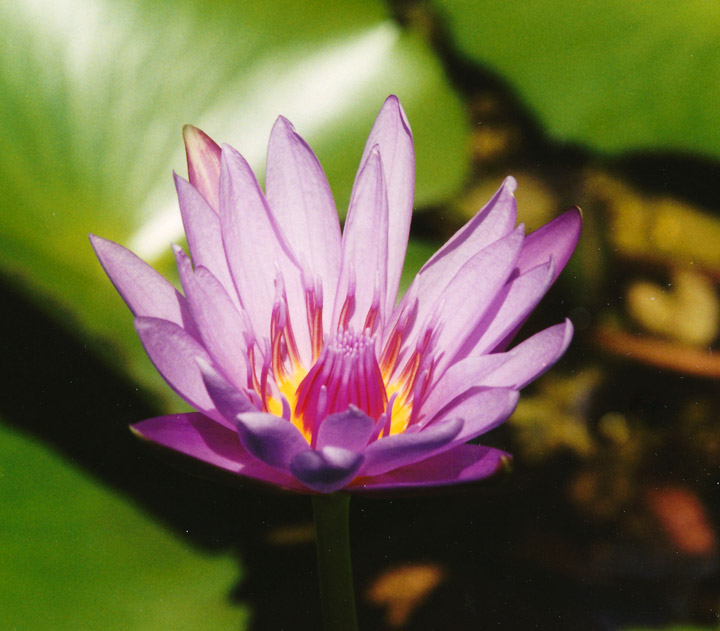
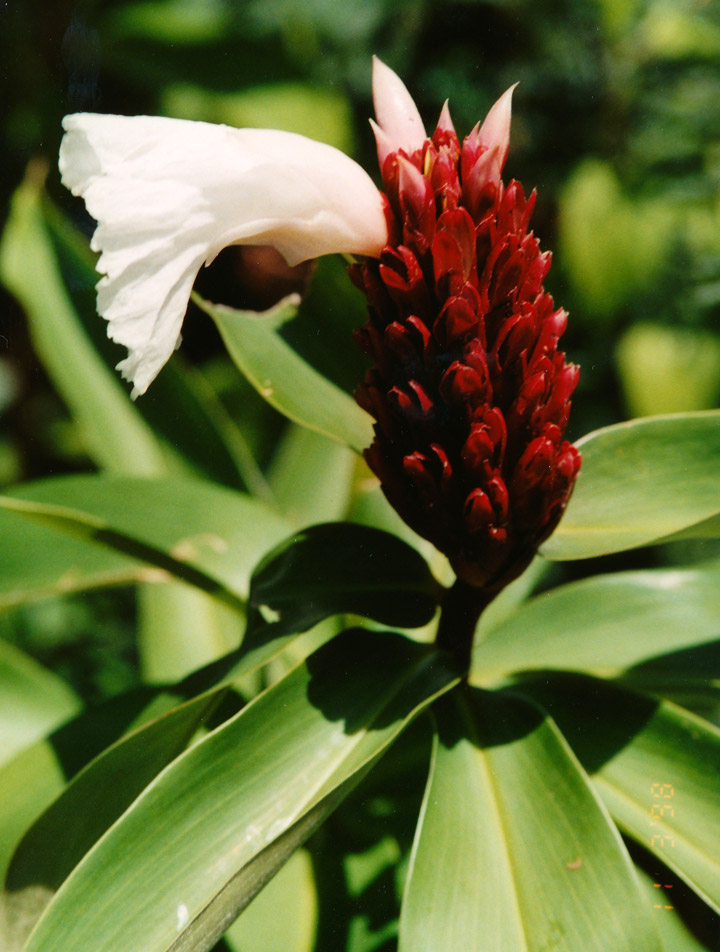
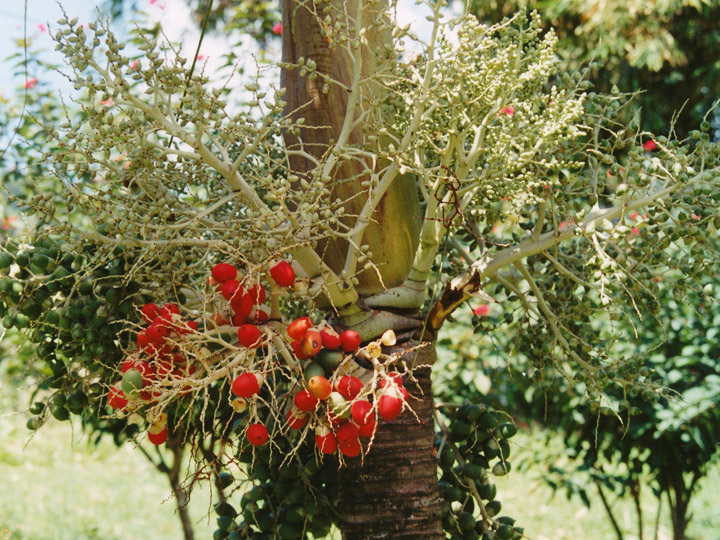
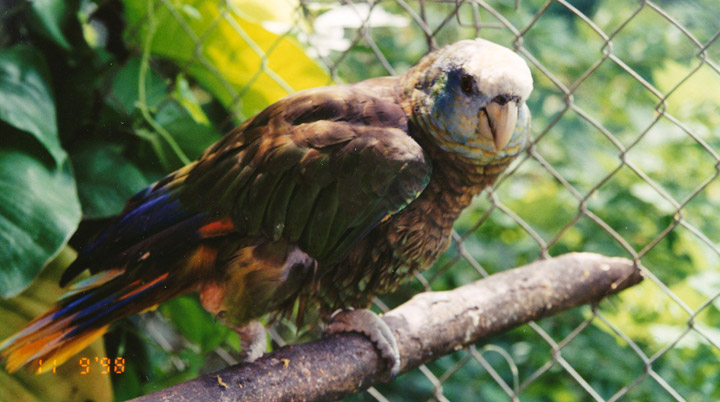
St Vincent Parrot, “Amazona guildingii”
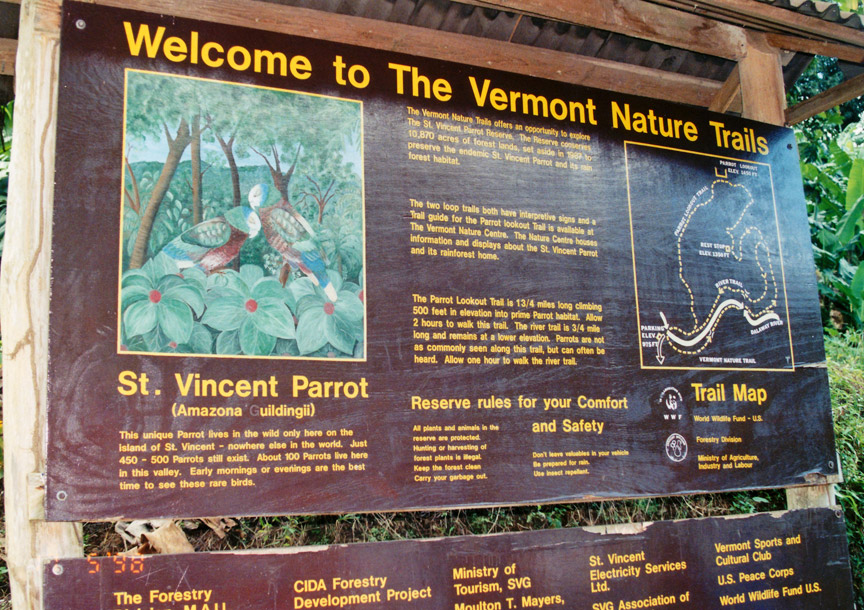
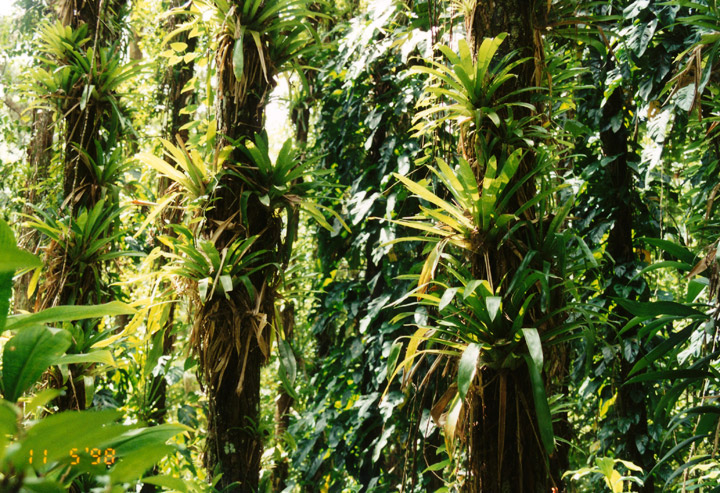
rain forest
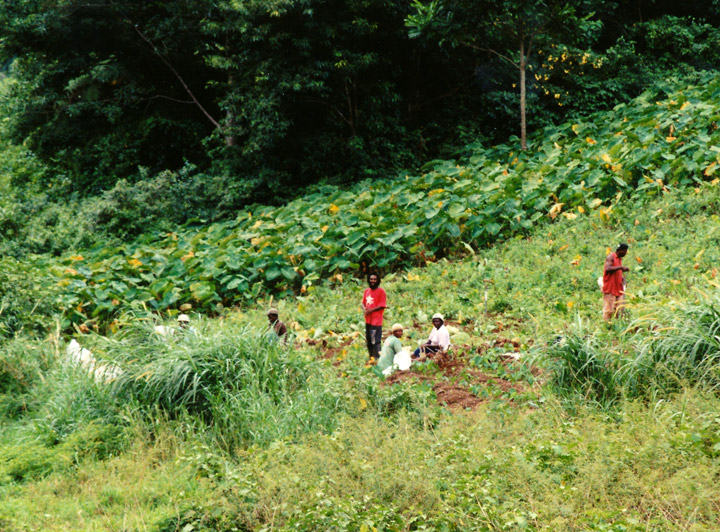
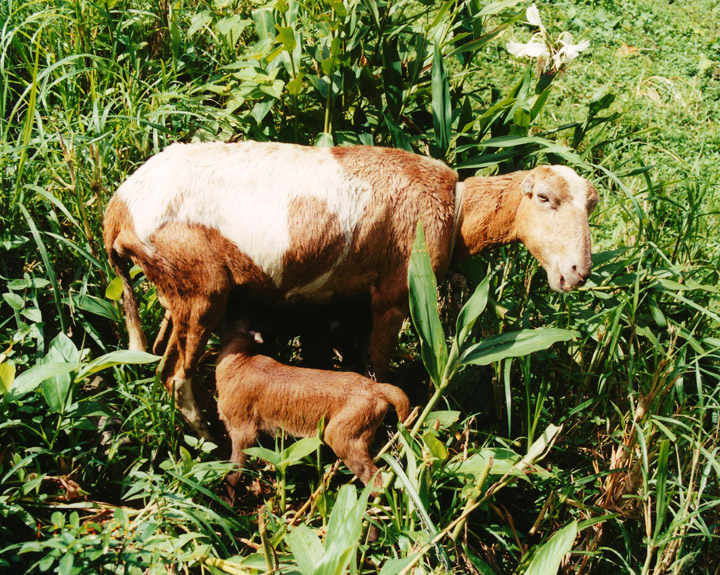
mother and child
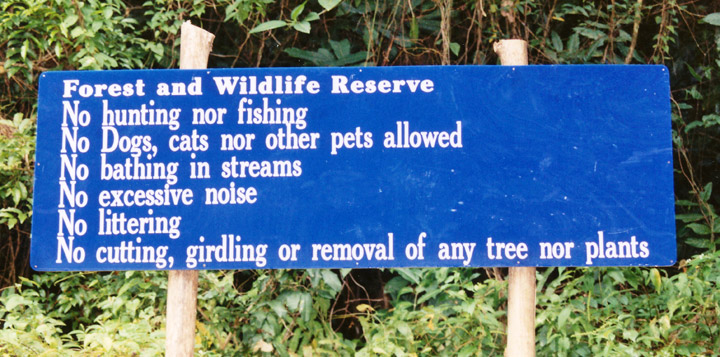
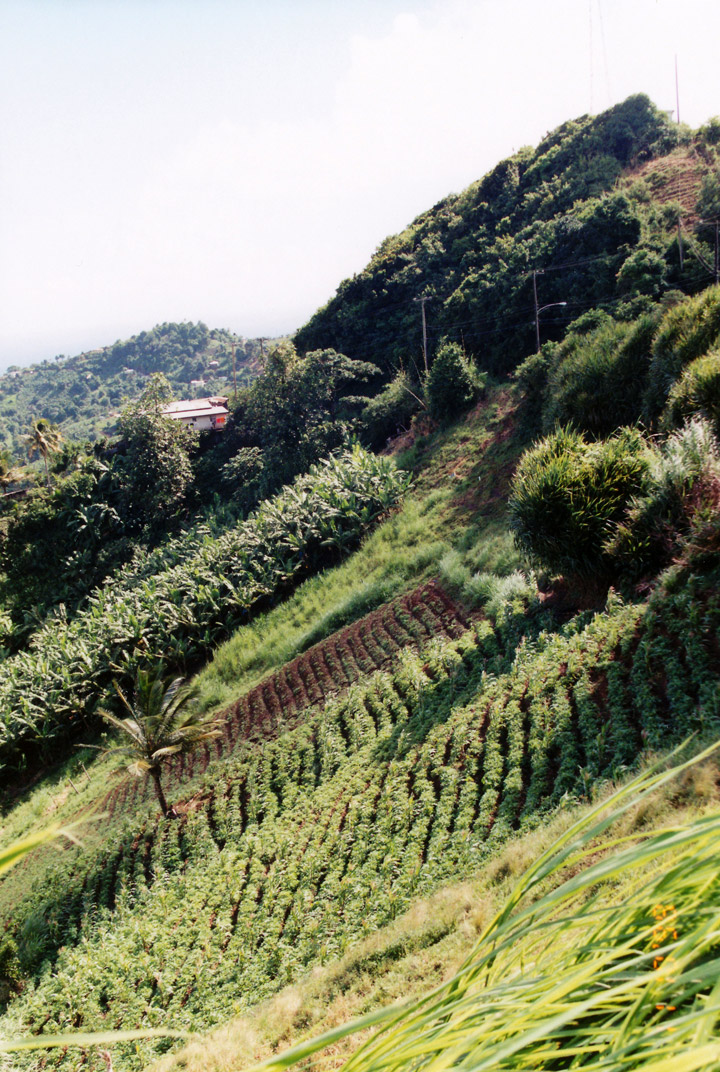
creating agriculture on the hillside
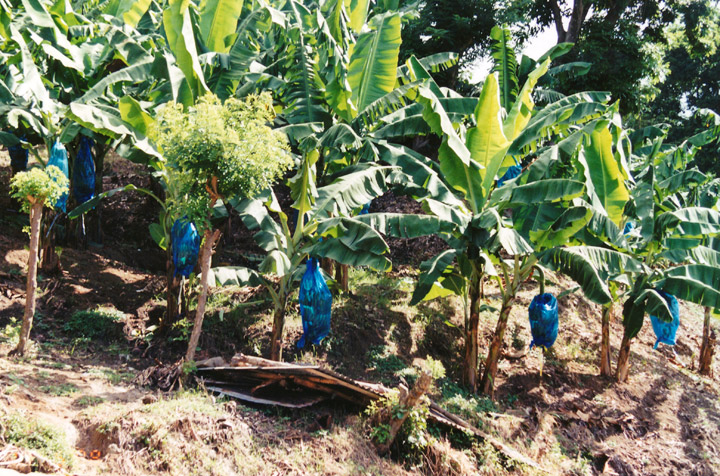
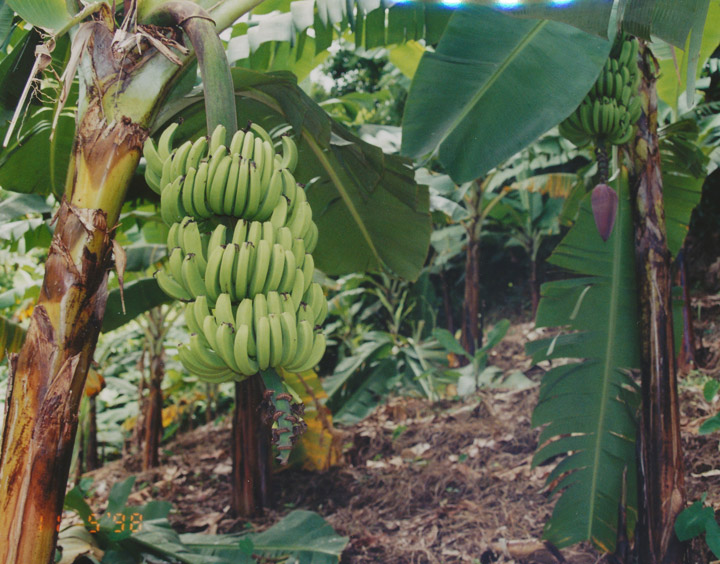
bananas
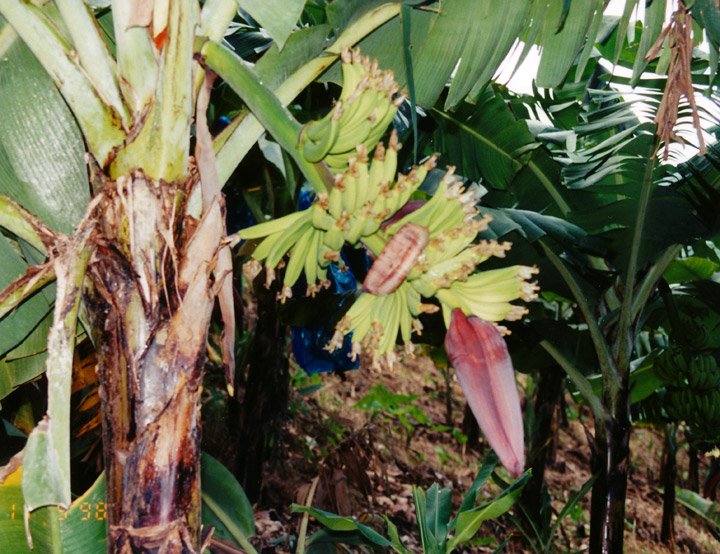
banana bloom
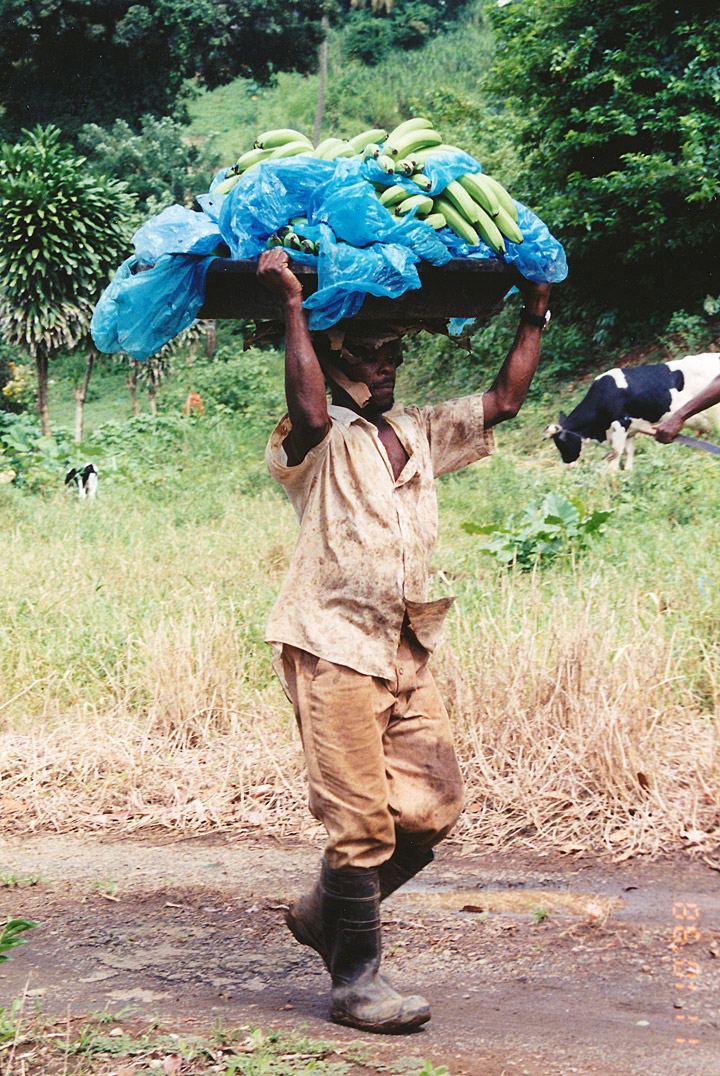
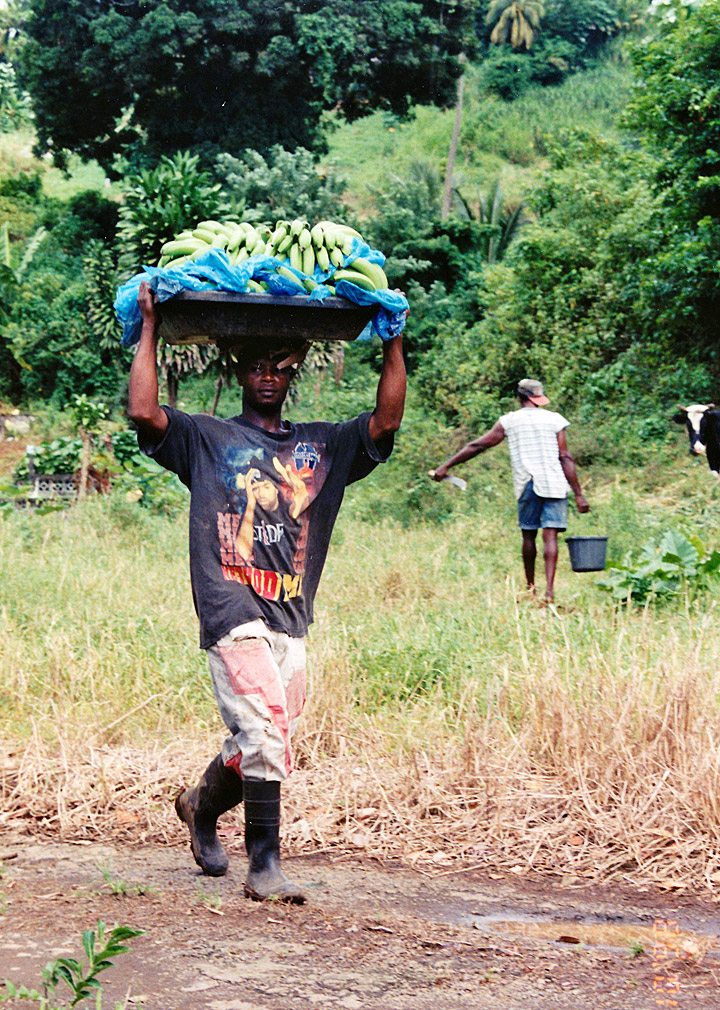
harvesting bananas
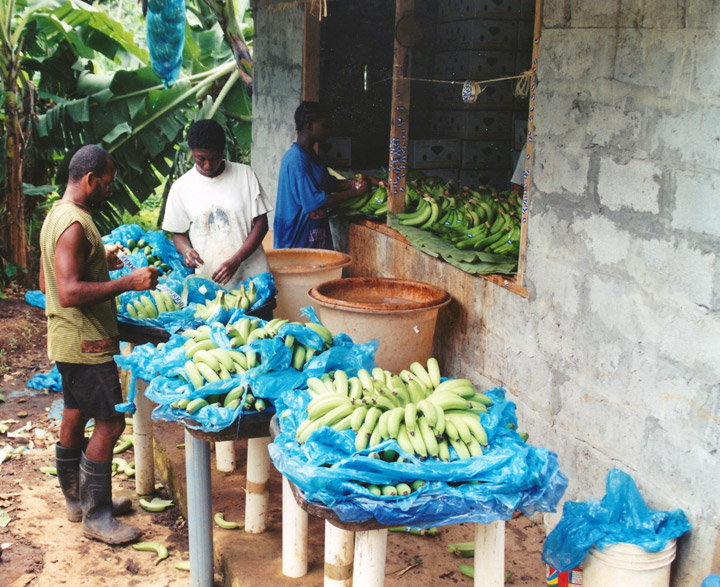
preparing for export
